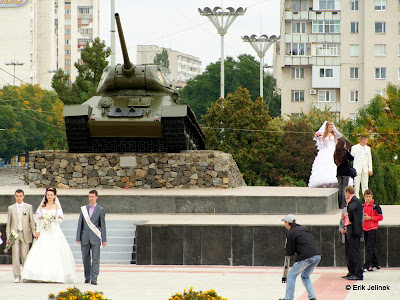The Făgăraş Mountains, part of the Southern Carpathians, form an imposing and almost impenetrable barrier running east to west. These mountains have always been the southern border of Transylvania, the first and most important line of defence for the region. In the 12th century, to strengthen and protect the border marches the Hungarians invited Saxon (German) colonists to set up shop in the valleys on the northern foothills leading to the important mountain passes. For this the Saxons were given trading and social privileges and they soon became the urban elite, along with the Hungarians.
It wasn't all fun and games though, and after the Mongols came hordeing through in 1241 they decided to beef up their defences. Instead of building castles (which are usually for nobles anyway, of which there were not many amongst the Saxon settlers) they decided to make their churches into veritable fortresses. It seems like every town and little village between Sighișoara (Schässburg in German) and Sibiu (Hermannstadt) has its own, über-Gothic fortified church, some of them surrounded by up to three rings of defensive walls up to 12m high. Their interiors and graveyards are also almost entirely German affairs, with solid names like Wagner, Schmidt and Kohler peering back at you through the ages, a testament to what once was. It was a joy for me to potter from one village to the next, sometimes hitching a ride or otherwise taking a small path over from one valley to the next, enjoying the bucolic scenery and gorgeous woods in their golden autumn finery. It's not just the churches that indicate this western transposition mind you, the villages and houses here are also set out in a very different form from ordinary Romanian villages: the farmsteads have a central courtyard enclosed by high, contiguous walls, there are no gardens and, most strangely for Romania, there are no grannies sitting by the side of the road commenting on life as it passes by.

The fortified church at Biertan dominates the village and can be seen, looming, from miles around as you approach.




